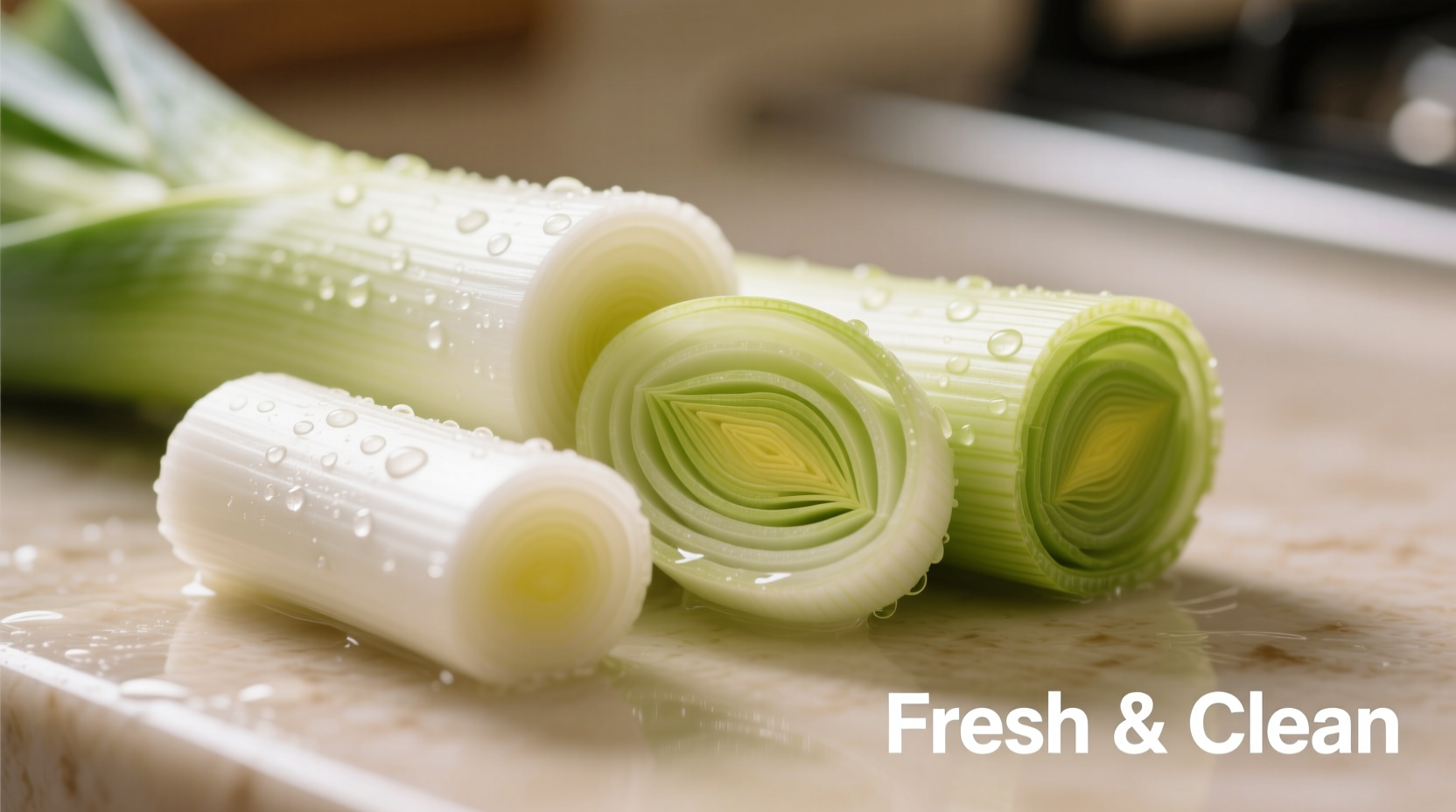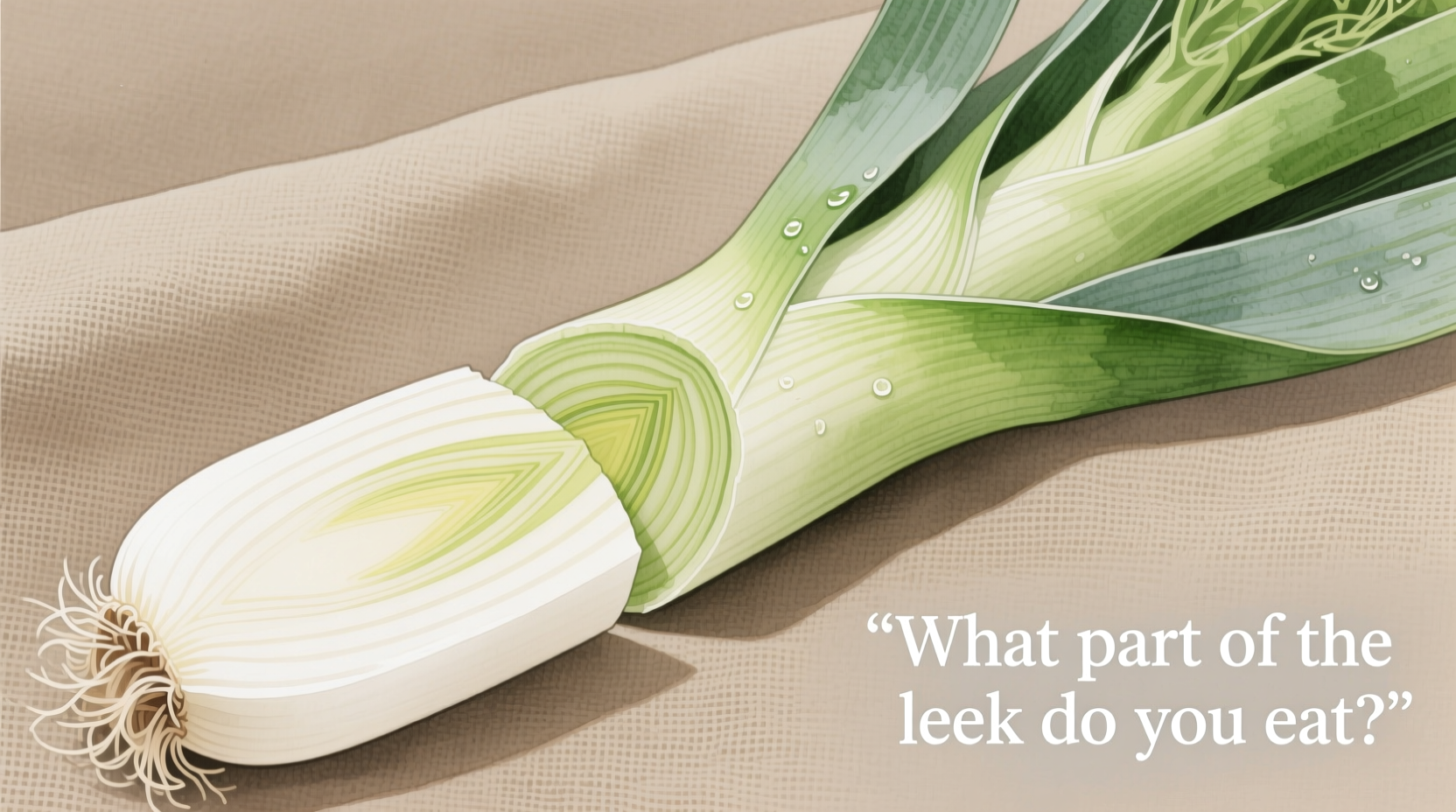When wondering what part of the leek do you eat, many home cooks mistakenly discard valuable portions. Understanding leek anatomy transforms this common kitchen mistake into an opportunity for flavor enhancement and waste reduction. This guide reveals exactly which sections deliver the best culinary results while minimizing unnecessary food waste.
Leek Anatomy: Identifying Edible Sections
Leeks (Allium ampeloprasum var. porrum) consist of distinct sections with varying textures and flavors. Unlike onions, leeks grow vertically with different color gradations indicating their culinary suitability:
| Leek Section | Color Description | Edibility Rating | Best Culinary Uses |
|---|---|---|---|
| White Base | Crisp white | ★★★★★ | Sautéing, roasting, raw in salads |
| Light Green | Pale to medium green | ★★★★☆ | Soups, stews, braises |
| Dark Green Top | Deep green, fibrous | ★☆☆☆☆ | Stocks, broths, infusions |

Maximizing Usable Portions: Beyond the White Base
Contrary to popular belief, what part of the leek do you eat extends well beyond just the white section. The light green portion—often discarded—contains significant culinary value when prepared correctly. According to USDA agricultural research, approximately 60% of a typical leek's weight consists of usable portions when properly cleaned and prepared.
Professional chefs consistently utilize more of the leek than home cooks. The James Beard Foundation's culinary guidelines note that properly cleaned light green sections provide nuanced flavor complexity while reducing food waste. When selecting leeks, look for firm, crisp sections without yellowing or excessive wilting.
Step-by-Step Cleaning Process
Proper cleaning determines how much of your leek becomes usable. Follow this professional chef-recommended timeline:
- Trimming (30 seconds): Remove root end and dark green tops beyond the light green transition point
- Quartering (20 seconds): Slice lengthwise to expose inner layers
- Soaking (5-10 minutes): Submerge in cold water to loosen trapped soil
- Swirling (15 seconds): Gently agitate to release remaining dirt
- Drying (1-2 minutes): Pat dry with clean towel before cooking
This method ensures maximum usability while eliminating the gritty texture that often deters cooks from using more of the leek. The Cornell University Food Science Department confirms that thorough cleaning makes 85-90% of the white and light green sections suitable for direct consumption.
Culinary Applications by Section
Different leek portions excel in specific cooking applications. Understanding these distinctions helps you determine what part of the leek do you eat for optimal results:
White and Pale Green Sections
These tender portions work best in dishes where leeks serve as a primary ingredient. Their delicate flavor shines in:
- Creamy leek and potato soup
- Quiches and savory tarts
- Stir-fries requiring quick cooking
- Raw applications like fine julienne in salads
Medium to Dark Green Sections
While too fibrous for direct consumption in most dishes, these sections shouldn't be discarded. They provide excellent flavor foundations when:
- Simmered for 30+ minutes in stocks and broths
- Used as aromatic bases for long-cooked sauces
- Infused in olive oil for cooking fats
- Added to vegetable scrap bags for future stocks
Avoiding Common Preparation Mistakes
Several misconceptions affect how much of the leek gets used. The University of California Cooperative Extension identifies these context boundaries for leek usage:
- Never use dark green tops raw - Their tough fibers become unpleasant in uncooked applications
- Always clean thoroughly - Even seemingly clean leeks harbor soil between layers
- Don't discard all green portions - Light green sections add complexity to cooked dishes
- Adjust cooking times by section - White parts cook faster than green sections
Storage Techniques to Extend Usability
Proper storage maintains leek quality and extends the window for determining what part of the leek do you eat. The FDA recommends:
- Store uncut leeks in refrigerator crisper drawer for 10-14 days
- Wrap cleaned sections in damp paper towels inside airtight containers
- Freeze dark green tops in stock bags for future use
- Use white portions first as they deteriorate faster than green sections
When stored properly, leeks maintain optimal texture for preparation up to two weeks. Discard any sections showing significant yellowing, sliminess, or strong odors.
Waste-Reducing Cooking Strategies
Maximizing usable portions transforms your approach to what part of the leek do you eat. Try these professional techniques:
- Create "zero-waste" vegetable stock using dark green tops and root ends
- Finely chop light green sections for omelets and frittatas
- Blend tougher green portions into pesto for added nutrition
- Use leek greens as flavorful skewers for grilling vegetables
According to Food and Agriculture Organization research, proper leek utilization can reduce kitchen waste by 30-40% compared to traditional preparation methods. These strategies make your cooking both economical and environmentally conscious.











 浙公网安备
33010002000092号
浙公网安备
33010002000092号 浙B2-20120091-4
浙B2-20120091-4